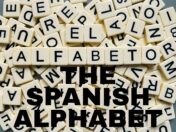Ceceo: Explaining the Spanish “Lisp”

Get our free email course, Shortcut to Conversational.
Have conversations faster, understand people when they speak fast, and other tested tips to learn faster.
More infoJust as British English is different from American English, Spanish from Latin America and Spanish from Spain have significant variations. One of the most distinctive phonological features of Spanish from Spain is definitely the way they pronounce the S sound, since many Spaniards pronounce it like ‘th.’ This is colloquially known by some as the Spanish lisp, but this is not an accurate term.
In today’s post, we’re going to learn all about the linguistic phenomena around this pronunciation, known as distinction, ceceo, and seseo. We’ll also look at a few speculations as to their origins. By the end of the lesson, you’ll know all there is to know about the so-called Spanish lisp.
Let’s get started!
Pronunciation differences
First of all, as you’ve probably guessed, the Spanish lisp is not actually a lisp, but simply a linguistic trait. It all revolves around how people pronounce the different S sounds, also known as sibilant sounds.
There are three ways of pronouncing sibilant sounds in Spain depending on the region and dialect. These are known in Spanish as distinction, ceceo, and seseo. Let’s take a look at the specifics of each type of Spanish sibilant pronunciation.
Distinción – Distinction
In most Spanish regions, Spanish speakers make a distinction between the pronunciation of the letters S, Z, and C (when it appears before an E or an I). With distinction, the Spanish S is pronounced similarly to a regular English S sound, while the Z and C are pronounced with an airy ‘th’ sound, similar to the English ‘th‘ in words like “think” or “math.” This is the phenomenon responsible for the cliché pronunciation of the city of “Barthelona.”
Ceceo
In contrast to the distinction that is made in most regions of Spain between the three sibilant sounds, some regions pronounce the S the same way as the Z and C sounds. This phenomenon of Spanish pronunciation is known as ceceo, and it’s prevalent in the southern regions of Spain such as Andalusia. With this phonological feature, ceceo involves the pronunciation of the letter S with the same ‘th’ sound as the Z and C. This is the classic Spanish “lithp!”
Seseo
The third phonological phenomenon regarding sibilant sounds in Spanish is seseo. In this case, the letter Z is pronounced the same way as the letter S, with a clear S sound like in English. Likewise, the sibilant C pronunciation (when it falls before an E or an I) is also pronounced the same way. While this pronunciation exists among some native speakers in Spain, it is nearly ubiquitous across Latin American pronunciations.
Summary
We’ve just seen the important differences in pronunciation between the three phonological phenomena of distinction, ceceo, and seseo. The important differences between each one revolve around how the letter S vs Z is pronounced, with the sibilant C following the Z pronunciation.
Here’s a quick pronunciation chart to sum up these differences, with each of the letters pronounced with the English S sound or the airy English ‘th’ sound like in “math.”
| S | Z | sibilant C | |
| Distinción | S | th | th |
| Ceceo | th | th | th |
| Seseo | S | S | S |
Spain vs Latin America
Where does the Spanish lisp come from, and why doesn’t Spanish from Latin America have it?
A popular myth to explain the origin of ceceo and distinction is the narrative of King Ferdinand, a medieval king. According to this tale, King Ferdinand spoke with an actual lisp, so Spanish people adopted the distinctive lisp-like pronunciation out of deference in order to please their king. In this way, the Spanish lisp was spread across the language. Despite its prevalence, however, this story has been debunked as a myth. Today, native Spanish speakers generally find it disrespectful when their way of speaking is mislabeled as a “lisp” by foreigners.
Another theory as to why Latin American Spanish doesn’t exhibit the same “lisp” pronunciation is that the region was colonized by Spanish conquerors and settlers from regions of Spain where seseo was prevalent. While this story may have some historical merit, it oversimplifies the complex linguistic evolution that occurred over the centuries of Spanish influence in the Americas.
The real reason behind distinction, ceceo, and seseo, as with any language’s distinctive features, lies in the natural evolution of the language. Much like the diverse English accents and dialects between regions and countries, the Spanish language has developed its own unique regional characteristics over time in all of the places where it’s spoken. Indeed, the natural evolution of the language has led to notable variations in accents and pronunciations not only between countries, but also within individual nations.
Conclusion: The Spanish “Lisp?”
So after our journey of exploration into the Spanish lisp, we’ve learned it’s not a “lisp” at all, but it’s rather a distinct set of phonological phenomena surrounding the sibilant sounds in the language. Let’s think of distinction, ceceo, and seseo like a musical dance of sounds between different parts of Spain and Latin America.
Distinction shows some features of the so-called Spanish lisp, since the letter Z and the sibilant C are both pronounced like ‘th,’ while ceceo is the full-on Spanish lisp where the letter S is also pronounced this way. On the other hand, seseo describes the pronunciation phenomenon whereby the sibilant sounds are all pronounced like the English S. Seseo is the norm throughout Latin American Spanish, while the other two phenomena are prevalent in different regions of Spain.
In addition to our explanations of Spanish pronunciations, we also introduced some stories about Spanish kings and conquerors. As it turns out, however, the real story of varying pronunciations is much simpler: languages naturally evolve over time, leading to unique ways of speaking in different regions.
It’s important to note that there isn’t a correct or incorrect way of pronouncing these sounds in Spanish. Some are just more common in certain regions than in others. Ceceo may sound odd in Latin America, for example, but for Andalusians it’s the norm.
Now that you know the truth about the so-called Spanish lisp, you’re ready to uncover more quirks and features of the Spanish language!



